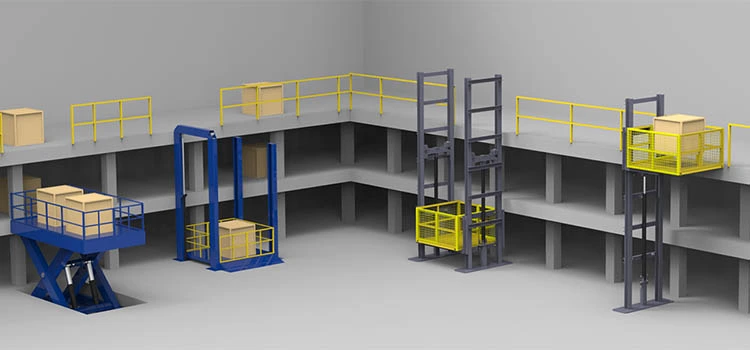London Lift Company: Providing Comprehensive Lift Solutions Throughout the Capital
London Lift Company: Providing Comprehensive Lift Solutions Throughout the Capital
Blog Article
Delving Into the Globe of Elevators: Common Concerns Dealt With by Numerous Lift Mechanisms
As we browse with the vertical transport systems of modern buildings, lifts stand out as an essential component of our day-to-day lives. From hydraulic elevators to traction systems and machine-room-less layouts, each lift kind comes with its collection of usual issues.
Hydraulic Lifts
Hydraulic lifts, commonly liked for low-rise structures, make use of fluid pressure to manage the motion of the lift vehicle (lift repair companies). This device includes a hydraulic pump pressing oil right into a cyndrical tube, triggering the elevator to move in the preferred instructions. While hydraulic elevators are known for their silent and smooth procedure, they do come with their own collection of usual problems
One prevalent trouble with hydraulic lifts is oil leakage. The seals in the hydraulic system can break over time, resulting in oil seepage. If left unaddressed, this not just develops a mess however can also affect the lift's performance. In addition, problems with the control system, such as damaged valves or a malfunctioning pump, can cause disruptions in the lift's motion.
Regular upkeep and timely repair work are important to make sure the smooth performance of hydraulic elevators. By attending to these typical concerns proactively, building owners can reduce downtime and make certain the safety and effectiveness of their upright transportation system.
Traction Lifts
When thinking about upright transport systems in structures, an additional typical kind in addition to hydraulic lifts is the traction lift. Traction elevators run utilizing a system of ropes and weights that move the elevator automobile by gripping onto the hoist ropes. This mechanism enables smoother and faster upright transport contrasted to hydraulic systems.
One of the usual problems dealt with by grip elevators is rope wear. The continuous activity of the ropes within the traction system can bring about tear and put on over time, potentially triggering the lift to malfunction or become risky for use. Normal examinations and maintenance of the ropes are necessary to guarantee the lift's correct functioning and safety.
Another problem that grip elevators might encounter is related to the control system. Issues with the control system can bring about problems such as unpredictable motion, delays in feedback times, or even total closures. Normal testing and upkeep of the control system are important to stop such problems and make sure the lift's dependability.
Machine-Room-Less (MRL) Elevators

One of the essential components of MRL elevators is the portable gearless traction maker that is set up within the hoistway. This equipment successfully drives the elevator vehicle without the need for bulky equipment located in traditional grip lifts. Furthermore, MRL elevators commonly make use of a counterweight system to balance the car, additional enhancing their power effectiveness.
In spite of their advantages, MRL lifts might deal with challenges related to upkeep and repair work due to the constrained space for tools installation. Accessibility for servicing parts within the shaft can be limited, calling for specialized training for service technicians. Proper maintenance timetables and regular evaluations are vital to guarantee the ongoing smooth operation of MRL elevators.
Overloading and Weight Limit Issues
Overloading and weight restriction problems are critical issues in elevator procedures. Elevator producers design lifts with certain weight abilities to guarantee guest security and equipment long life.
When elevators are overloaded, it places excessive strain on the motor, cable televisions, and various other components, potentially causing malfunctions or failures. Security systems such as sensing units and overload sensing units are in area to prevent elevators from relocating if they identify excess weight. Additionally, going beyond weight limits can lead to increased energy intake and wear and tear on the elevator system.
To alleviate overwhelming issues, building supervisors need to plainly display weight restrictions in lifts and educate owners on the value of adhering More Help to these restrictions - lift repair companies. Routine upkeep checks by qualified technicians can additionally aid make certain that lifts are operating within risk-free weight specifications. By resolving overloading and weight restriction problems proactively, building owners can improve lift safety and security and efficiency
Electrical System Failings
Exceeding weight restrictions in elevators can not only lead to mechanical concerns yet also possibly contribute to electric system failures within the lift facilities. Electric system failures are a vital worry in elevator procedure, as they can trigger unforeseen shutdowns, malfunctions, or also security threats.
In addition, power surges or fluctuations in the electrical supply can also interrupt the elevator's operation, influencing its efficiency and safety and security. These electric disturbances can damage delicate elevator components such as control board, motherboard, or sensing units, resulting in system failures. Normal upkeep and assessments are crucial to identify and address potential electric issues quickly, making sure the reliable and risk-free procedure of lift systems. By sticking to weight limits and carrying out regular electric system checks, structure proprietors can alleviate the threat of electrical failures in elevators.
Verdict

Hydraulic lifts, frequently liked for low-rise buildings, use fluid pressure to manage the movement of the elevator car.When taking into consideration upright transport This Site systems in buildings, another common type aside from hydraulic lifts is the grip elevator. Traction lifts operate utilizing a system of ropes and weights that move the elevator automobile by gripping onto the hoist ropes. Unlike traditional lifts that require a different maker area to house the tools, MRL lifts integrate most of the components within the shaft, eliminating the requirement for a committed maker area.In final thought, elevators deal try this out with common issues such as hydraulic breakdowns, grip system failures, and electric system issues.
Report this page